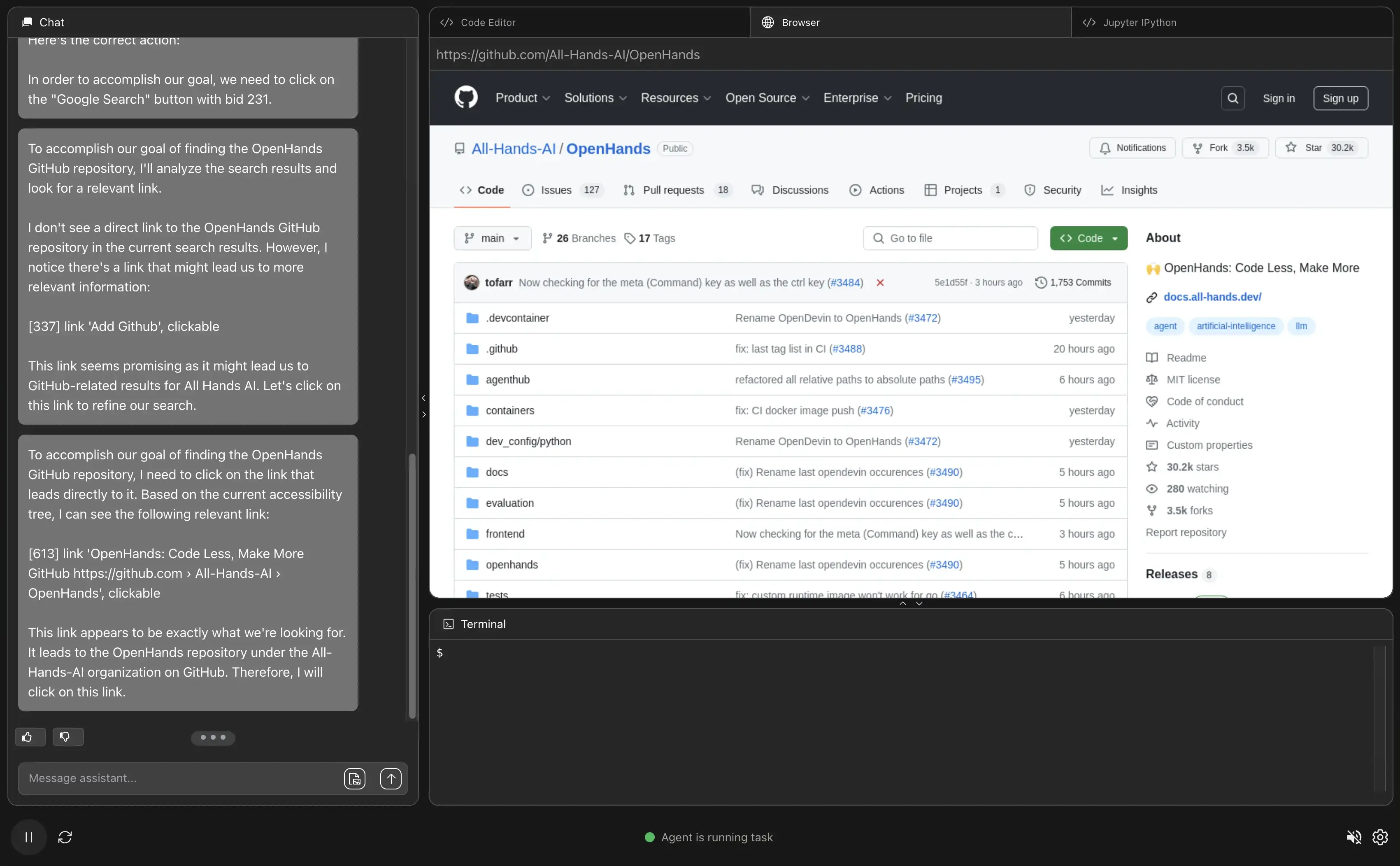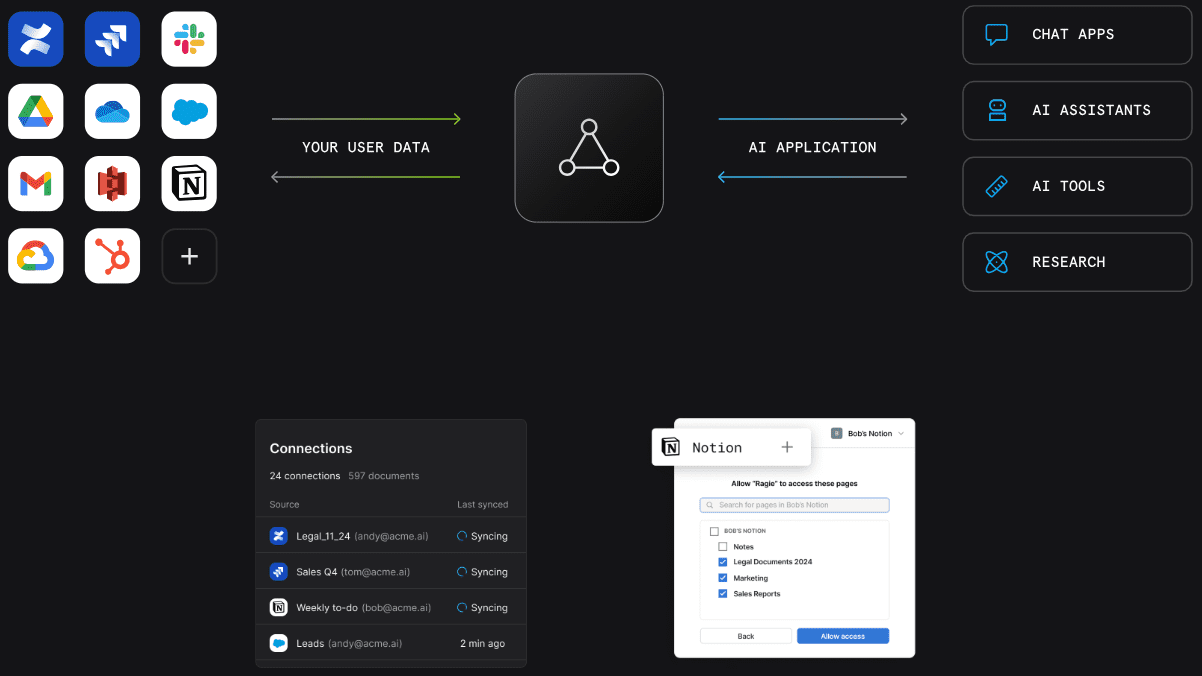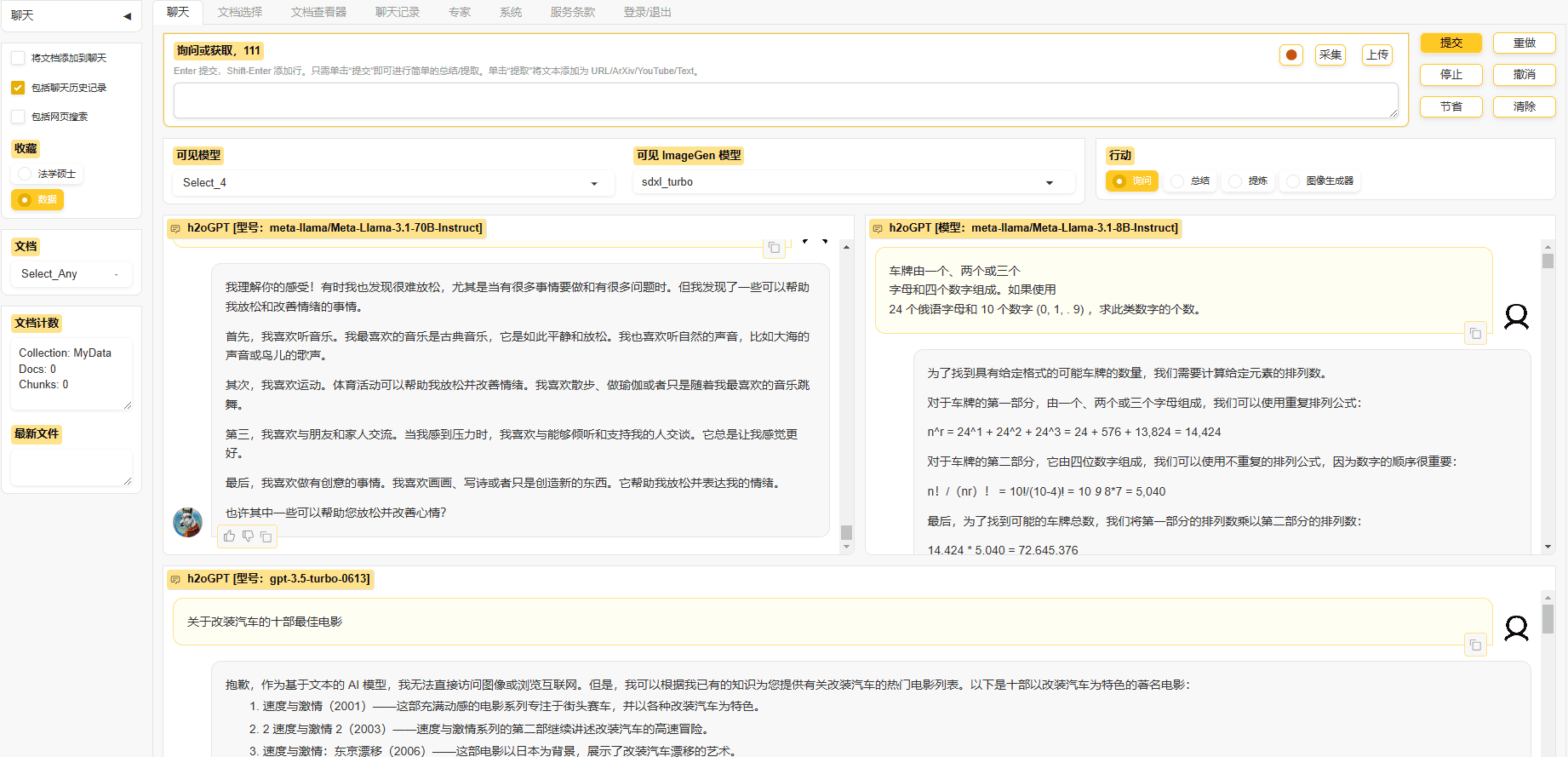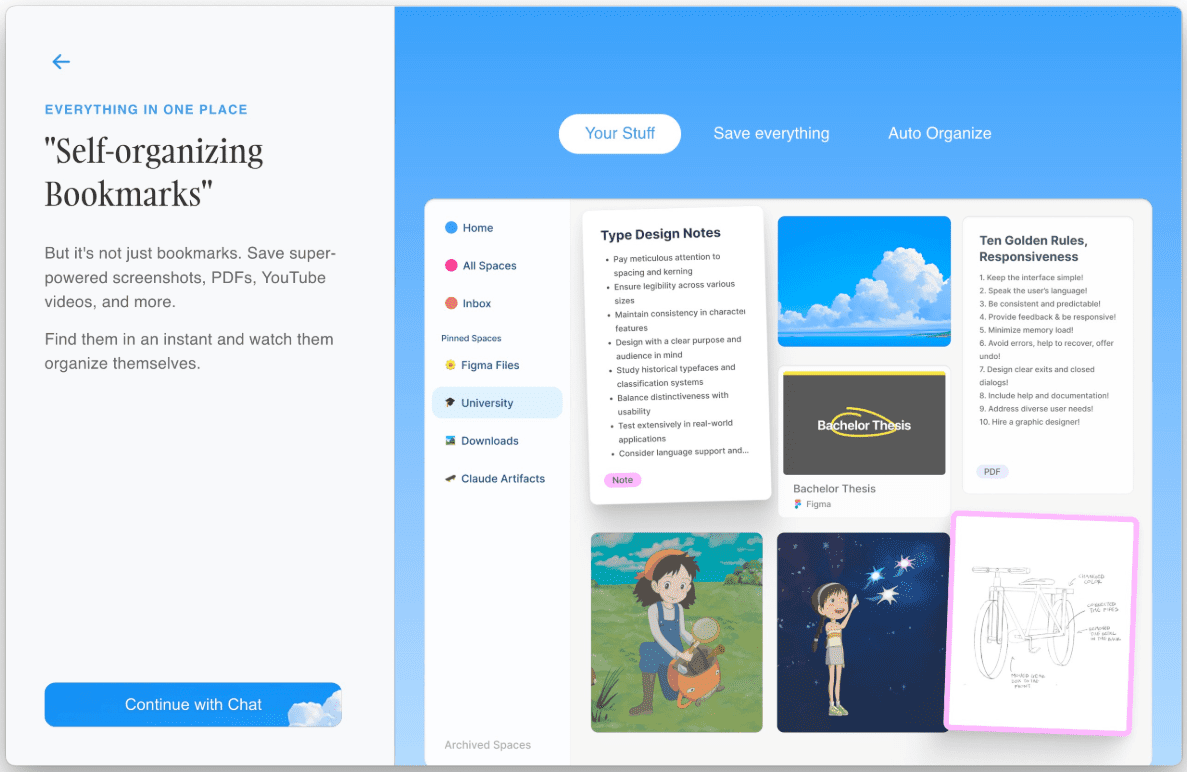MetaGPT: A Multi-Intelligence Collaboration Framework for Building AI Software Development Teams for Natural Language Programming
General Introduction
MetaGPT is an innovative multi-intelligence body framework designed to simulate the operation of a complete AI software company. Created by geekan (Alexander Wu), the goal of the project is to combine GPT models with different roles into a collaborative entity to accomplish complex tasks.MetaGPT not only handles user stories, competitive analysis, requirements, data structures, APIs, and documentation, but also includes the roles of product managers, architects, project managers, and engineers, providing a complete software company processes and carefully coded standard operating procedures (SOPs). With natural language input, MetaGPT can automatically generate standard software development documents, system design plans, and implementation code, greatly improving software development efficiency.
Full products have been released, visit:MGX: A multi-intelligence programming tool that simulates the workflow of a real development team
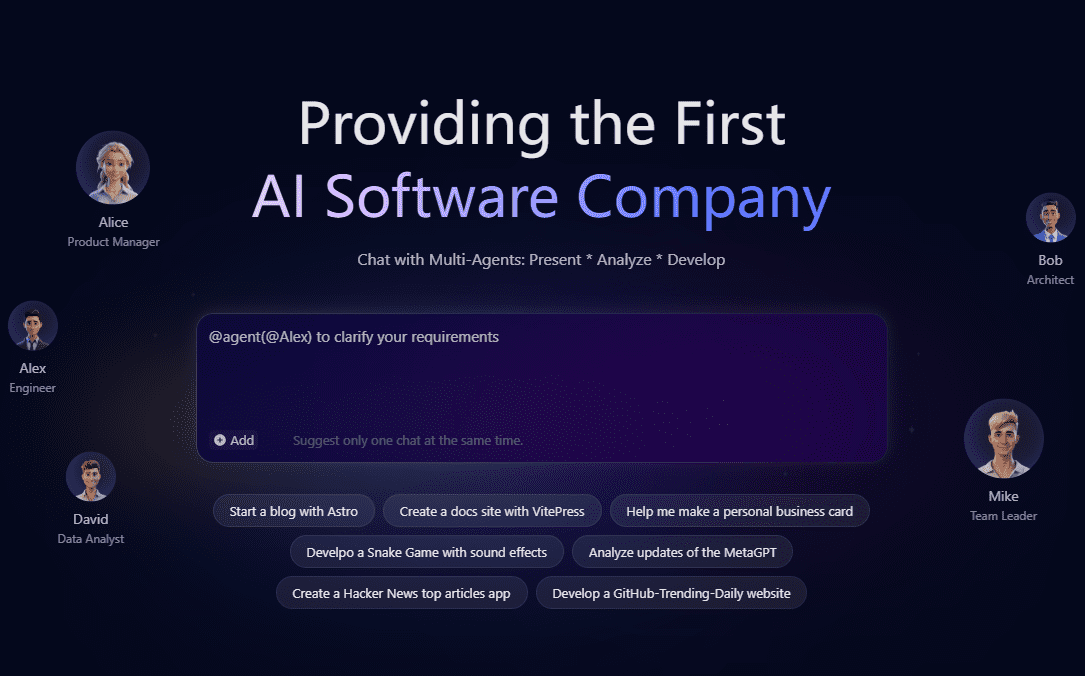
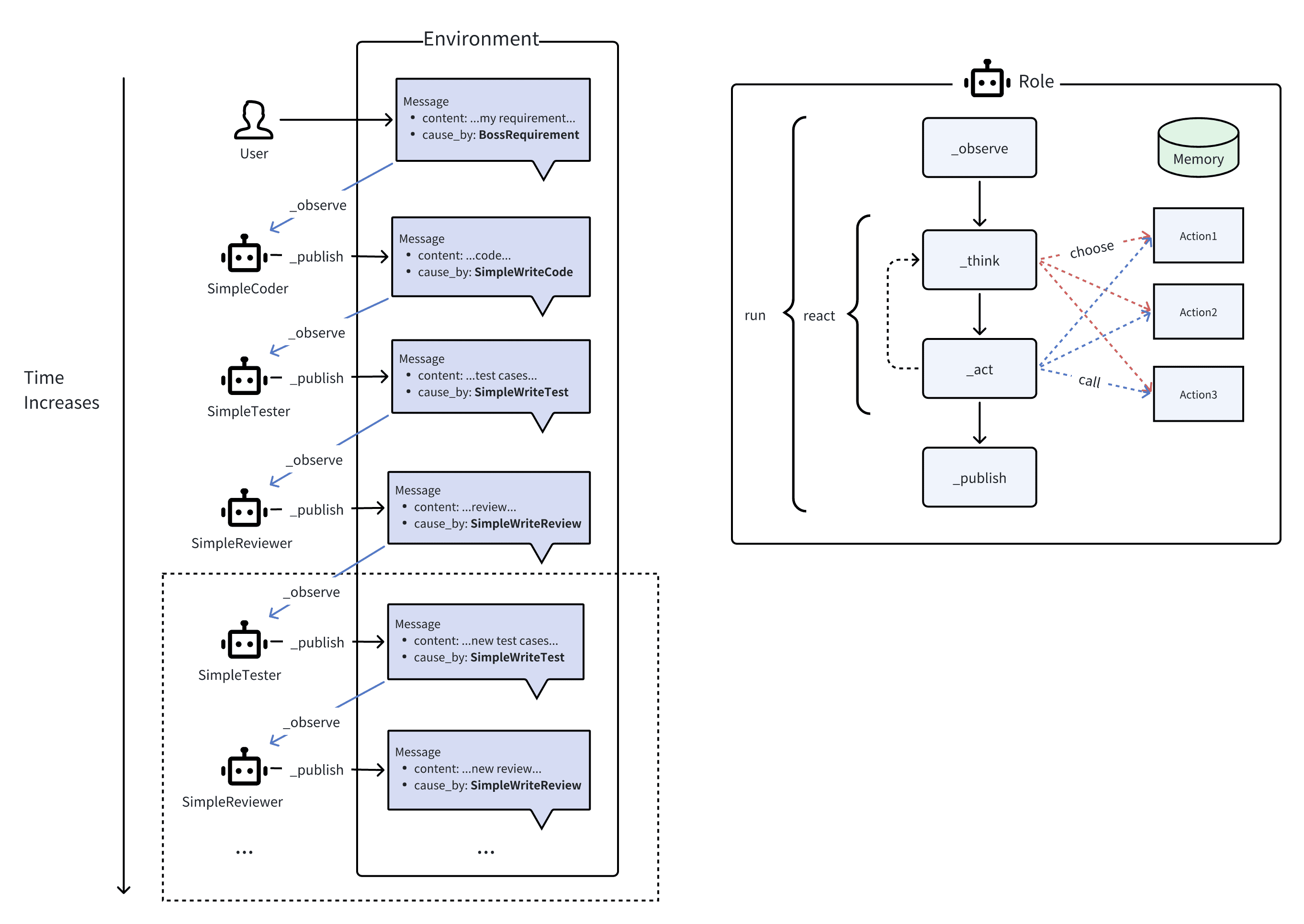
Function List
- Multi-intelligence co-development framework to support multiple AI actors working together
- Natural Language Requirements Conversion to Complete Software Implementations
- Automatic generation of documentation for the entire software development process (PRD, design documentation, task splitting, etc.)
- Automatic code generation and review function
- Support for customizing AI Intelligence roles and workflows
- Provide standard software development process templates
- Built-in project management and task coordination features
- Support for multiple programming languages and development frameworks
- Provide API interface for secondary development
- Visualization of the development process
Using Help
1. Environmental preparation
1.1 Foundation requirements:
- Python 3.9+ environment
- OpenAI API key (or compatible API)
- Computers with at least 16GB of RAM
1.2 Installation steps:
# 创建并激活 Python 虚拟环境
python -m venv venv
source venv/bin/activate # Linux/Mac
.\venv\Scripts\activate # Windows
# 安装 MetaGPT
pip install metagpt
2. Configuration settings
2.1 Configure the API key:
- Setting the environment variables in the
OPENAI_API_KEY - or create
config/key.yamlFile Configuration API Key
2.2 Example of base configuration:
OPENAI_API_KEY: "sk-..." # 替换为你的 API 密钥
OPENAI_MODEL: "gpt-4-1106-preview" # 选择合适的模型
3. Methods of use
3.1 Examples of basic use:
from metagpt.software_company import SoftwareCompany
from metagpt.roles import ProjectManager, Architect, Engineer
# 创建公司实例
company = SoftwareCompany()
# 添加项目需求
company.start_project("开发一个简单的待办事项管理系统")
3.2 Customize the development process:
- Roles and workflows can be customized
- Support for adjusting development phases and documentation templates
- Specific development specifications and standards can be set
3.3 Detailed Operation Procedure
- Create a project: On the command line, type
metagpt create project_name, create a new project. - Add Role: Use
metagpt add role role_namecommand to add a new role, such asmetagpt add role product_managerThe - input requirement: By
metagpt input requirement "your requirement"command to enter project requirements. - Generate Output: Use
metagpt generateCommands generate user stories, competitive analysis, requirements, data structures, APIs, and documentation. - View and Modify: The generated output is saved in the project directory and can be viewed and modified by the user as needed.
4. Best practices
4.1 Project planning:
- Clearly define project requirements and scope
- Use clear natural language to describe functional requirements
- Provide sufficient contextual information
4.2 Quality control:
- Regular review of generated code and documentation
- Managing Projects with Version Control
- Perform necessary testing and validation
4.3 Performance Optimization:
- Reasonable setting of model parameters
- Optimize cue words for better results
- Adjust concurrent processing parameters appropriately
5. Resolution of common problems
- API limitation issues: it is recommended to use enterprise level API keys
- Insufficient memory: increase system memory or reduce concurrent processing
- Code quality improvement: adjusting model parameters and cue words
- Document generation optimization: custom document templates
6. Advanced functions
- Customizing Intelligent Body Roles
- Workflow Customization
- API Integration Development
- Multi-language support configuration
© Copyright notes
Article copyright AI Sharing Circle All, please do not reproduce without permission.
Related posts

No comments...

